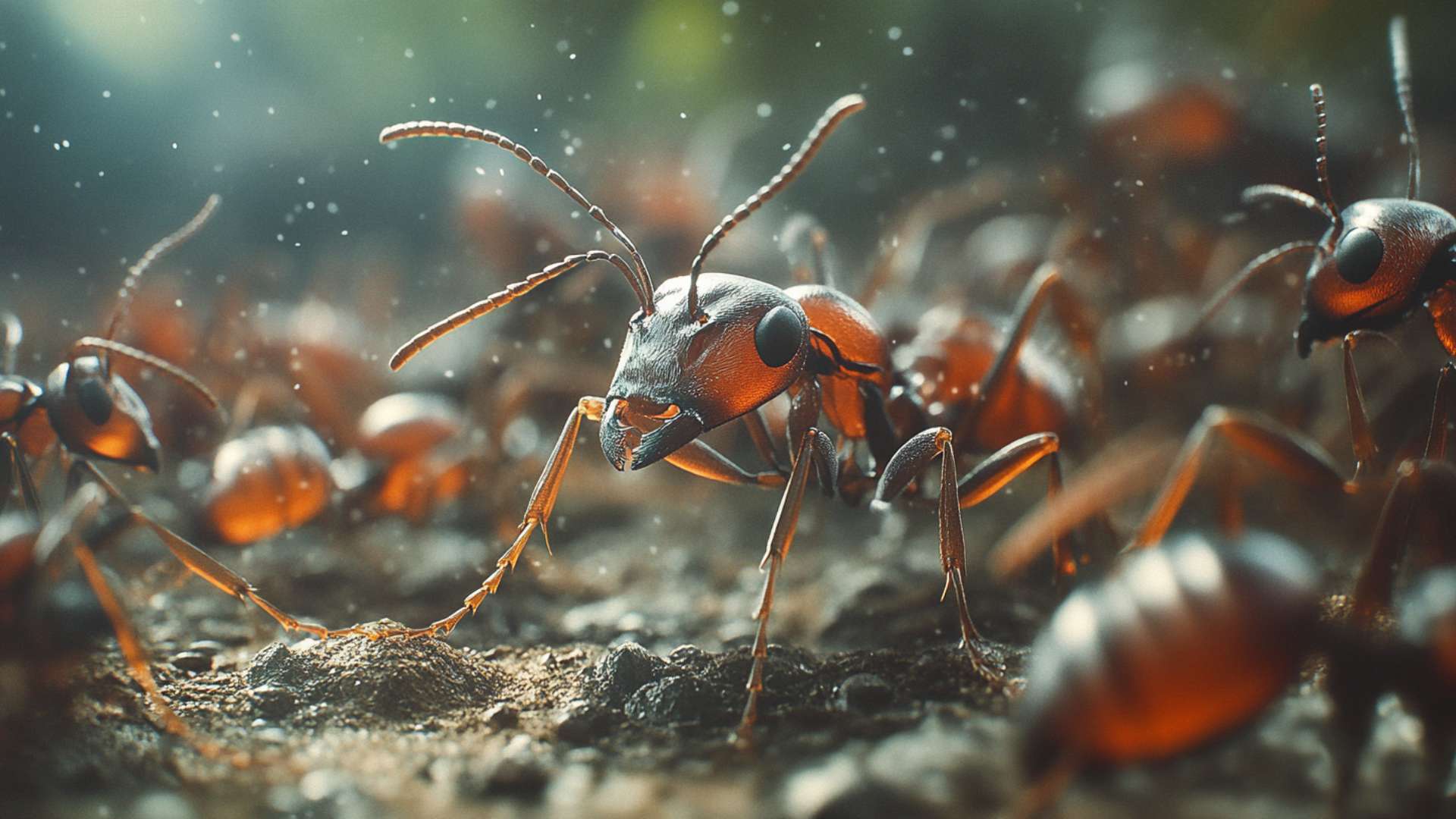Imagine walking through the arid landscape of Las Vegas, soaking in the scorching sun and admiring the desert flora. Suddenly, you notice a bustling trail of black ants moving with purpose.
But these aren’t just any ordinary ants; they are the infamous red imported fire ants, commonly found in Las Vegas and causing quite a stir among residents and visitors alike. So, what are these big red ants in Las Vegas that have everyone talking?
Overview of the Big Red Ants in Las Vegas

The big red ants you encounter in Las Vegas are none other than the notorious Solenopsis invicta, or more commonly known as the red imported fire ants (RIFA). These insects were first introduced to North America from South America back in the 1930s.
With their dark brown or reddish-brown bodies and heart-shaped abdomen, they have become a recognizable sight across many regions of the United States. In Las Vegas specifically, RIFA have adapted well to various habitats ranging from urban areas to natural landscapes.
You may come across their colonies near trees, shrubs, or even underground where they construct elaborate tunnel systems. These aggressive fire ants live up to their name – they can quickly overrun an area and outcompete other ant species for resources.
Importance of understanding these ants
Understanding these big red ants is crucial for several reasons. Firstly, RIFA can cause significant damage to structures and outdoor infrastructure.
They have a voracious appetite for all sorts of food – from dead insects to sugary substances like nectar or honeydew – which often leads them indoors in search of sustenance. Once inside homes or buildings, they may infest kitchens or pantry areas, contaminating food supplies.
Moreover, RIFA are famous for their painful sting capable of causing severe reactions in humans. Their stings contain venom that can trigger allergic reactions in sensitive individuals, resulting in painful welts, itching, and even anaphylactic shock.
Awareness of their presence can help residents and visitors take necessary precautions to avoid getting stung. By delving into the behavior, habitat, and impact of these big red ants in Las Vegas, we can better equip ourselves with the knowledge needed to coexist peacefully with them.
Additionally, understanding their ecology allows for the development of effective control measures to minimize structural damage and mitigate potential health risks associated with their presence. Stay tuned as we dive deeper into the fascinating world of these resilient insects and uncover more about the big red ants in Las Vegas!
Species Identification
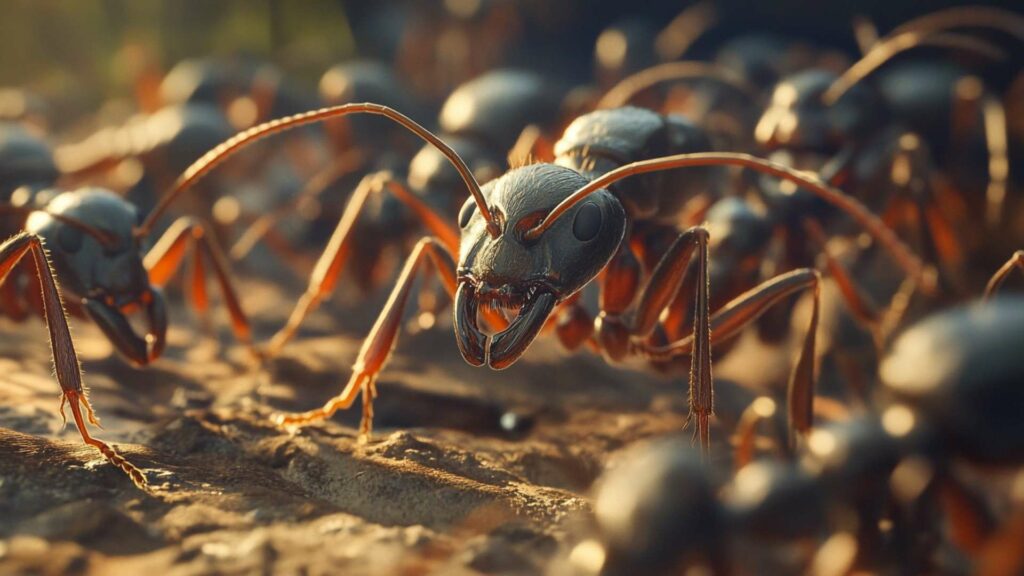
Scientific name: Solenopsis invicta
Red Imported Fire Ants (RIFA) are commonly found in the Las Vegas, NV area. Their scientific name, Solenopsis invicta, derives from Latin roots.
“Solenopsis” translates to “pit of ground-dwelling,” referring to their tendency to build nests underground. “Invicta” means “unconquerable,” reflecting their resilient and aggressive nature.
Common name: Red Imported Fire Ants (RIFA)
These ants earned the common name of Red Imported Fire Ants due to their reddish-brown coloration and fiery sting. Found throughout various regions in the United States, RIFA have established large colonies in Las Vegas. They stand out among most ants due to their size and aggressive behavior.
Physical characteristics of RIFA
Red Imported Fire Ants measure between 1/8 and 1/4 of an inch in length, making them relatively small compared to other ant species. They possess a dark reddish-brown coloration that distinguishes them from other more common types of ants found in Las Vegas homes or gardens. One notable physical feature of RIFA is the presence of two pairs of wings on the reproductive males and queens during mating season.
However, worker ants, which make up the majority of the colony population, lack wings entirely. Despite their diminutive size, RIFA possess a painful sting that delivers venomous chemicals into their victims’ skin.
When disturbed or threatened, these ants show no hesitation in attacking intruders en masse with their powerful jaws and stingers. Overall, an understanding of species identification is vital when dealing with ant infestations or potential encounters with these aggressive fire ants in Las Vegas or any other affected area.
Habitat and DistributionThe Remarkable Adaptation of Big Red Ants in Las Vegas
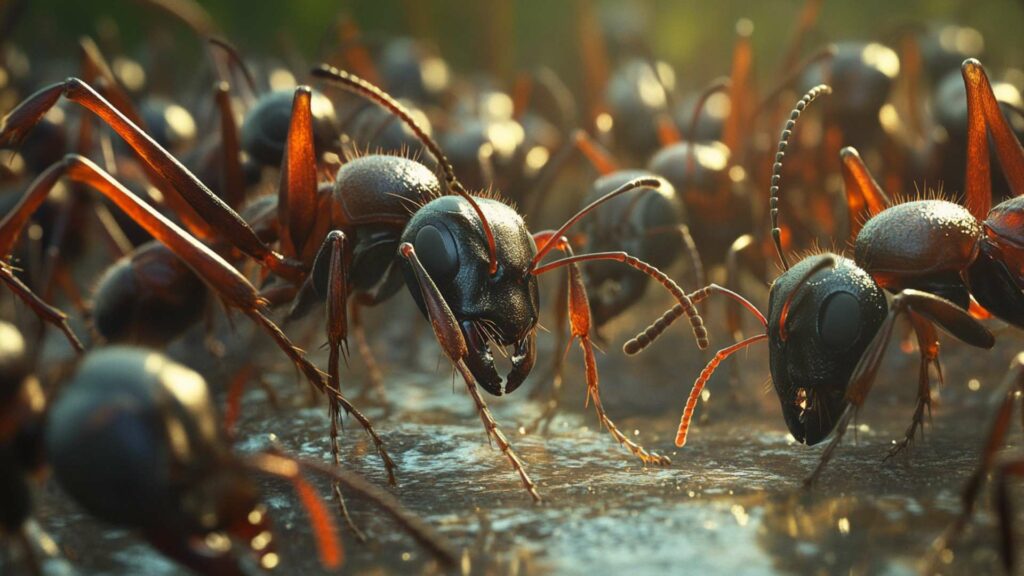
The big red ants, commonly known as Red Imported Fire Ants (RIFA), have an intriguing history of habitat and distribution. Originally native to South America, these determined insects made their way to North America in the 1930s, where they have since established a strong presence.
Their success can be attributed to their remarkable adaptability to various habitats, including the arid landscapes of Las Vegas. Despite their origins in tropical regions, fire ants have proven themselves to be highly resilient creatures capable of thriving in a range of environments.
In Las Vegas, they have successfully adapted to the desert climate by constructing deep underground nests that provide protection from extreme temperatures. These nests can be found in a variety of locations such as lawns, gardens, and even inside homes.
The distribution of fire ants within the city is influenced by several factors. One key factor is the availability of food sources for pavement ants.
Fire ants are opportunistic omnivores and can survive on a wide range of plant and animal matter. They are particularly drawn to sweet substances like nectar or honeydew but ghost ants are also known scavengers that will feed on dead insects or small vertebrates.
As such, areas with abundant food resources such as gardens or parks are more likely to harbor larger fire ant populations. Another factor influencing their distribution is human activity.
Fire ants are often inadvertently transported by humans when moving soil or plants from one location to another. Additionally, their ability to establish colonies within structures poses a significant challenge for residents in Las Vegas.
These aggressive fire ants can enter homes through cracks or gaps and cause both structural damage and potential harm to humans. Understanding the habitat preferences and distribution patterns of big red ants is crucial for effective pest management strategies in Las Vegas.
By recognizing their adaptability and identifying factors that influence their presence, we can take proactive measures to prevent ant infestations. Implementing simple preventive measures such as sealing cracks, installing door sweeps, and maintaining cleanliness in and around homes and gardens can significantly reduce the risk of encountering these resilient pests.
Behavior and Social Structure
The big red ants in Las Vegas, scientifically known as Solenopsis invicta or commonly called Red Imported Fire Ants (RIFA), exhibit a fascinating social structure. These ants are highly organized, living in large colonies with a well-defined caste system. Each ant has its own role and responsibilities within the colony, contributing to its overall functioning.
Queen ant’s role in reproduction and colony establishment
At the heart of every fire ant colony is the queen fire ant itself. She is the reproductive powerhouse responsible for laying eggs and ensuring the survival of the colony. The queen has a distinct appearance, boasting a larger size compared to other ants with her well-rounded body.
Her abdomen is heart-shaped, making her easily distinguishable from other worker ants. The primary function of the queen is to establish new colonies by laying eggs that hatch into worker ants.
She can lay thousands of eggs each day, ensuring a steady workforce for the expansion and survival of the fire ant population in Las Vegas. The queen’s contributions are crucial for sustaining their presence in various habitats throughout the city.
Worker ants’ responsibilities within the colony
Worker ants form the majority of any fire ant colony and play vital roles in maintaining its functionality. They are responsible for tasks such as foraging food, expanding and repairing nests, taking care of larvae and pupae, defending against threats, and even caring for their queen. These diligent workers venture out from their underground nests in search of food resources that meet their omnivorous diet requirements.
They communicate with one another using chemical signals called pheromones to coordinate their activities effectively. The workers’ efforts ensure not only their own survival but also contribute to sustaining the entire colony’s growth.
It’s important to note that worker ants exhibit a size variation within the colony, with smaller workers often responsible for tasks requiring agility and flexibility, while larger workers undertake more physically demanding duties like nest construction. This division of labor highlights the sophisticated social structure and efficiency of these red ants in Las Vegas.
Male ants’ limited lifespan and reproductive function
Unlike the queen ant, male fire ants have a relatively short lifespan. Their primary purpose is reproduction. When conditions are favorable, male ants will develop wings and take flight to mate with young queens from other colonies.
After fulfilling their reproductive role, the males die shortly afterward. This mating process ensures genetic diversity within fire ant populations in Las Vegas.
The males’ short-lived nature emphasizes their crucial role in sustaining the species’ genetic pool but also highlights the importance of other castes, particularly worker ants, in ensuring day-to-day colony survival. Understanding behavior and social structure can provide valuable insights into the fascinating lives of these big red ants found throughout Las Vegas.
Through their highly organized caste system, queen ants drive colony establishment and reproduction while worker ants fulfill essential functions necessary for overall colony success. Male fire ants contribute to genetic diversity through their brief yet significant mating endeavors before passing on the baton to future generations of these resilient insects.
Foraging Patterns and Food Preferences
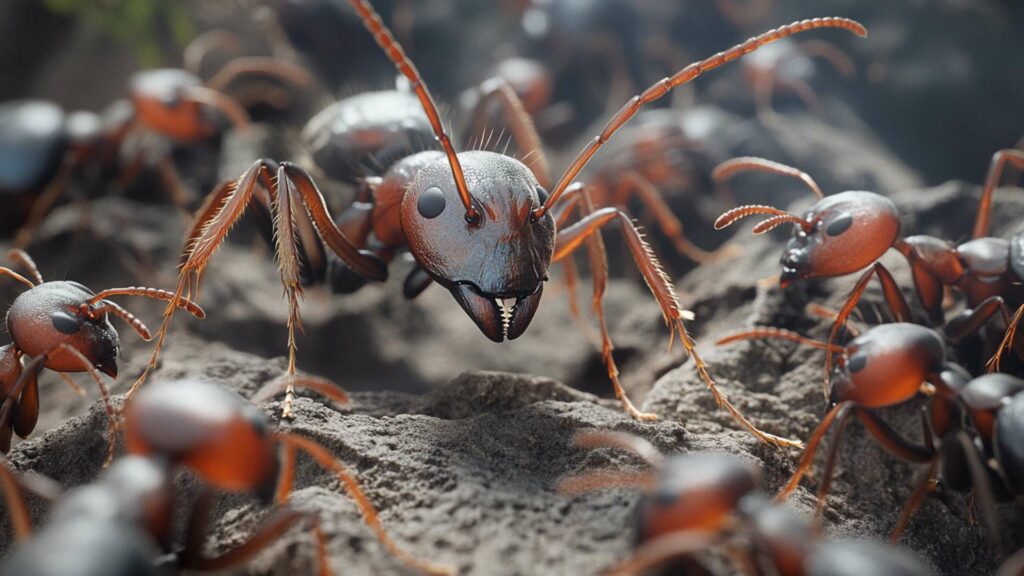
The big red ants, specifically the Red Imported Fire Ants (RIFA), found in Las Vegas, have an omnivorous diet, meaning they consume both plant and animal matter. These resourceful insects are not picky eaters and will scavenge for food wherever they can find it. Their ability to adapt their diet is one of the reasons why they have been so successful in establishing colonies across various habitats in Las Vegas.
Foraging Behavior Influenced by Temperature, Humidity, and Food Availability
The foraging behavior of these big red ants is greatly influenced by factors such as temperature, humidity, and food availability. Like many other species of ants in Las Vegas NV, the RIFA are more active during warmer months when temperatures are higher.
They prefer to forage during cooler parts of the day when it’s not too hot for their delicate bodies. When it comes to humidity levels, these ants tend to stay closer to their nests during periods of high humidity.
However, they become more active when humidity decreases since it helps them avoid dehydration. Food availability also plays a crucial role in their foraging patterns.
If there is an abundance of food sources nearby, such as nectar from flowers or honeydew secreted by aphids on plants, the RIFA will focus their efforts on those locations. However, if food becomes scarce due to drought or other environmental factors, they will expand their search radius and scavenge on a wider range of available resources.
Preference for Sugary Substances like Nectar, Fruits or Honeydew

When it comes to food preferences among the big red ants in Las Vegas homes and gardens or any other habitat within the city limits, sugary substances are a top choice. They have a particular fondness for nectar, fruits, or honeydew.
This preference for sweetness is not uncommon among ants, as it provides them with the necessary energy to fuel their activities. The RIFA will actively seek out plants that produce nectar and fruits, often climbing trees or shrubs in pursuit of these sugary delights.
Additionally, they may also cultivate insect herds like aphids to obtain the honeydew secretions they produce. This mutually beneficial relationship allows the ants access to a steady supply of sweet liquid while protecting the aphids from predators.
Ability to Scavenge on Dead Insects or Small Vertebrates
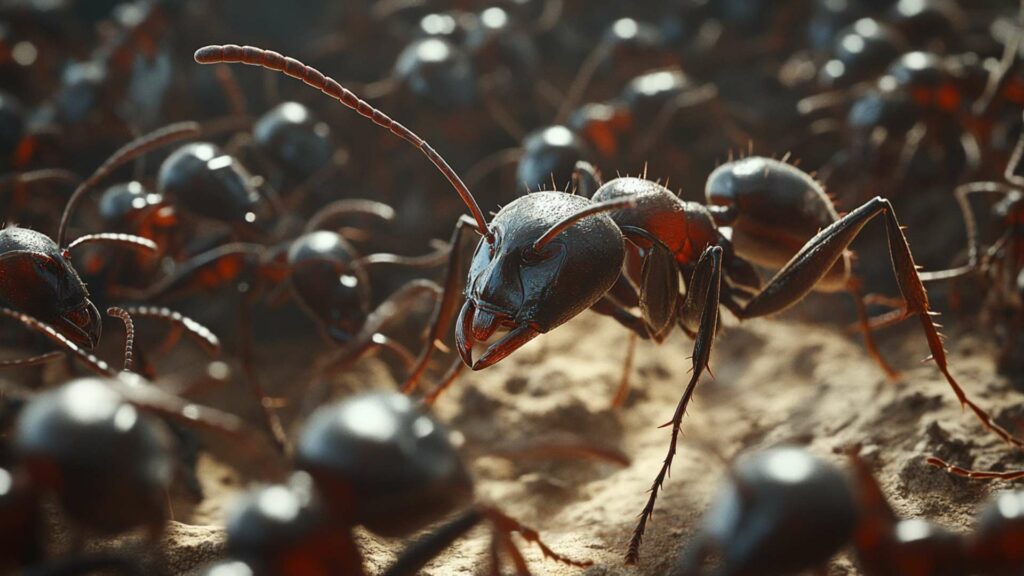
While the big red ants primarily prefer sugary substances, they are opportunistic scavengers and will not hesitate to feast on dead insects or small vertebrates if given the chance. This behavior highlights their adaptable nature and their ability to make use of available resources in their environment.
When encountering deceased insects or small vertebrates like lizards or small rodents, these resourceful ants will quickly mobilize and dismember the carcass into manageable pieces suitable for transportation back to their colony. This scavenging behavior ensures that no potential food source goes to waste.
The big red ants in Las Vegas exhibit an omnivorous diet consisting of both plant and animal matter. Their foraging patterns are influenced by temperature, humidity levels, and food availability.
While they have a strong preference for sugary substances such as nectar, fruits, or honeydew produced by insects like aphids, they also possess the capability to scavenge on dead insects or small vertebrates when necessary. These adaptable feeding habits contribute to their success as a species in various habitats across Las Vegas.
Impact on Ecosystems and Human Health
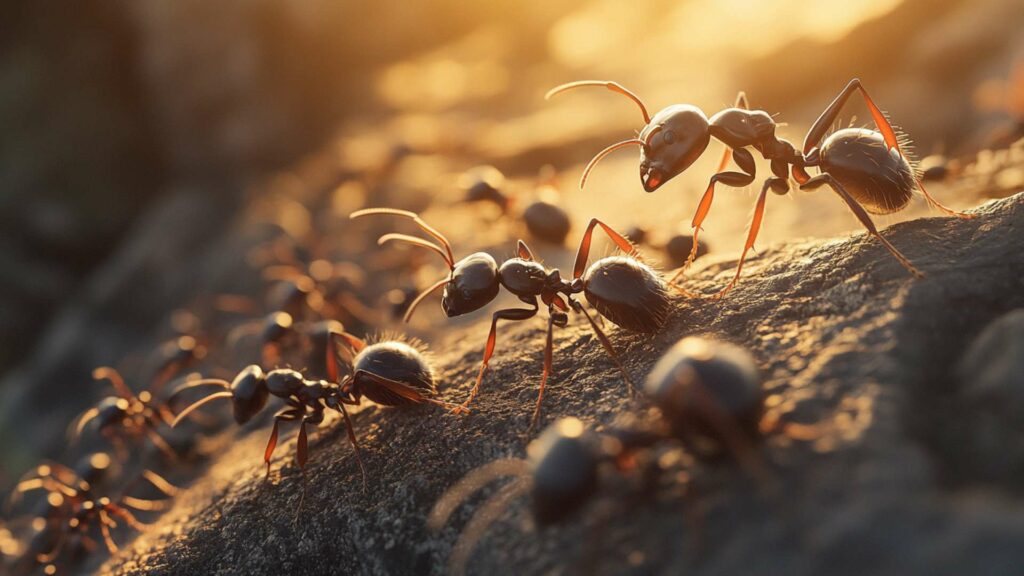
The presence of big red ants, also known as Red Imported Fire Ants (RIFA), in Las Vegas has had significant ecological consequences for native species. These invasive ants are highly aggressive and have a competitive edge over other ant species found in the area such as pavement ants, argentine ants, and odorous ants. RIFAs outcompete these native ants for food resources, disrupting the delicate balance of the ecosystem.
Their voracious appetite allows them to consume large quantities of insects, including beneficial ones like pollinators or other bugs that contribute to natural pest control. Moreover, RIFAs are known for their predatory behavior towards smaller animals like lizards, birds, or even small mammals.
This predation can cause a decline in local wildlife populations as they fall prey to these invasive fire ants. The disruption caused by RIFAs can lead to imbalances within the food web and negatively impact biodiversity in the region.
Aggressive nature leading to displacement of other ant species
One of the most striking aspects of big red ants is their aggressive nature. RIFAs are notorious for invading and dominating areas where other ant colonies exist.
They employ territorial aggression to eliminate competing ant colonies by attacking their queen or workers until they surrender or perish. This aggressive behavior often results in the displacement of other ant species from their natural habitats.
Native ant populations struggle to withstand the relentless attacks from RIFA colonies. As a result, many local ant populations have seen significant declines or even complete eradication due to competition with these invasive red fire ants.
Sting mechanism causing painful reactions in humans
While big red ants might pose ecological challenges, they also pose a direct threat to human health due to their sting mechanism. RIFA workers are equipped with a stinger capable of injecting venom, causing painful reactions in humans.
When disturbed or threatened, RIFAs swarm and attack intruders, delivering multiple stings that can result in severe pain, itching, and swelling. For individuals who are allergic to ant venom, these stings can trigger more severe reactions, including anaphylaxis.
It is crucial to exercise caution when encountering these common ants and RIFAs to avoid painful encounters and potential health risks. The impact of big red ants in Las Vegas extends beyond their mere presence.
These invasive fire ants have ecological ramifications on native species most ants through competition and predation. Furthermore, their aggressive behavior leads to the displacement of other ant species from their habitats.
Additionally, the sting mechanism possessed by these ants poses a threat to human health by causing painful reactions. It is essential to understand the implications of these big red ants in order to develop effective management strategies that mitigate both ecological and human health concerns.
Control Measures and Prevention Strategies
Chemical Control: Waging War on the Tiny Invaders
When faced with an ant infestation in your Las Vegas home, it may be necessary to call upon the expertise of pest management professionals. These seasoned warriors against household pests have an arsenal of chemical control methods at their disposal. One commonly used approach involves applying insecticides directly to the ants’ nests or entry points, effectively eliminating the unwanted intruders.
These insecticides are specially formulated to target ants while minimizing harm to humans and other beneficial insects. It is important, however, to exercise caution when using chemical control methods.
Always follow the instructions provided by professionals and pay close attention to any safety precautions mentioned. While these insecticides can be highly effective in eradicating ants from your property, they should be handled responsibly and kept out of reach of children or pets.
Taking a Natural Approach: Biological Control Options
For those who prefer a more eco-friendly solution or want to avoid chemicals altogether, introducing natural predators can help keep ant populations in check. Some beneficial insects such as certain species of spiders or parasitic wasps feed on ants and can assist in reducing their numbers naturally. This biological pest control method offers a sustainable approach that doesn’t disrupt the ecosystem balance.
In Las Vegas, another effective predator commonly used for controlling ant populations is the tiny but mighty ghost ant (Tapinoma melanocephalum). These pale-colored insects possess a voracious appetite for other ants and can help maintain a balanced ecosystem by preying on fire ants and other invasive species.
Prevention is Key: Safeguarding Your Home
While dealing with an existing ant infestation is crucial, taking preventive measures ensures your Las Vegas home remains free from future invasions. One practical step homeowners can take is sealing off potential entry points by installing weather stripping around doors and windows.
This helps create a barrier that ants and other insects find difficult to breach. Additionally, inspecting and repairing damaged wood in your home can be a deterrent for ants seeking nesting sites.
Red imported fire ants, for instance, are particularly attracted to any moist areas or decaying wood. By promptly addressing any such issues, you reduce the chances of these aggressive fire ants establishing colonies in your home’s structural elements.
Remember, prevention is always better than cure when it comes to dealing with unwanted guests like the big red ants commonly found in Las Vegas. By combining chemical control methods with natural alternatives and implementing preventive measures around your property, you can reclaim your home from these persistent insects and enjoy an ant-free living environment.
So next time you find yourself pondering what are the big red ants in Las Vegas, rest assured that there are effective control measures and prevention strategies available to combat their presence. Whether opting for chemical or natural methods or ensuring your home is well-protected against their intrusion, you can regain control over your living space while keeping these fascinating creatures at bay.
Interesting Facts about Big Red Ants in Las Vegas
Their Cooperative Rafting Ability: Surviving Floods Together
One fascinating fact about big red ants, specifically the Red Imported Fire Ants (RIFA) found in Las Vegas, is their remarkable ability to form cooperative rafts during flooding situations. When faced with rising waters, these ants link their bodies together and create a floating structure on the water’s surface.
By creating a living raft, they can protect the entire colony from drowning. This behavior showcases their remarkable adaptability and social cooperation, as they work together to survive adverse circumstances.
Their Exceptional Tunneling Skills: Creating Extensive Networks
Another interesting aspect of these big red ants is their impressive tunneling capabilities. They are expert excavators, constructing intricate underground networks known as ant colonies or nests. These colonies can be extensive and may contain multiple chambers for different purposes such as brood rearing and food storage.
The tunnels provide protection against predators and regulate temperature and humidity levels within the colony. The complexity of these subterranean structures highlights the resourcefulness and ingenuity of these tiny creatures.
Their Hybridization Potential: Combining Genetic Variations
Big red ants in Las Vegas have been known to exhibit hybridization between different populations of RIFA introduced from various regions. This interbreeding can lead to genetic diversity within colonies, which may confer advantages such as increased resistance to diseases or environmental conditions. Furthermore, this hybridization phenomenon provides an opportunity for researchers to study evolutionary processes occurring in real-time and gain insights into adaptation mechanisms.
Conclusion
The big red ants found in Las Vegas, specifically the Red Imported Fire Ants (RIFA), are truly fascinating creatures with remarkable abilities. From their cooperative rafting behavior during floods to their exceptional tunneling skills and potential for hybridization, these ants continue to surprise and captivate scientists and nature enthusiasts alike.
While their painful sting and potential impact on ecosystems should not be overlooked, it is crucial to appreciate the resilience and adaptability of these ants as they navigate their way through the ever-changing landscape. The study of big red ants not only deepens our understanding of these remarkable species but also reminds us of the intricate complexities of the natural world we share.
Dissuade Ants with D-Termination: Las Vegas’ Top Pest Control Solution!
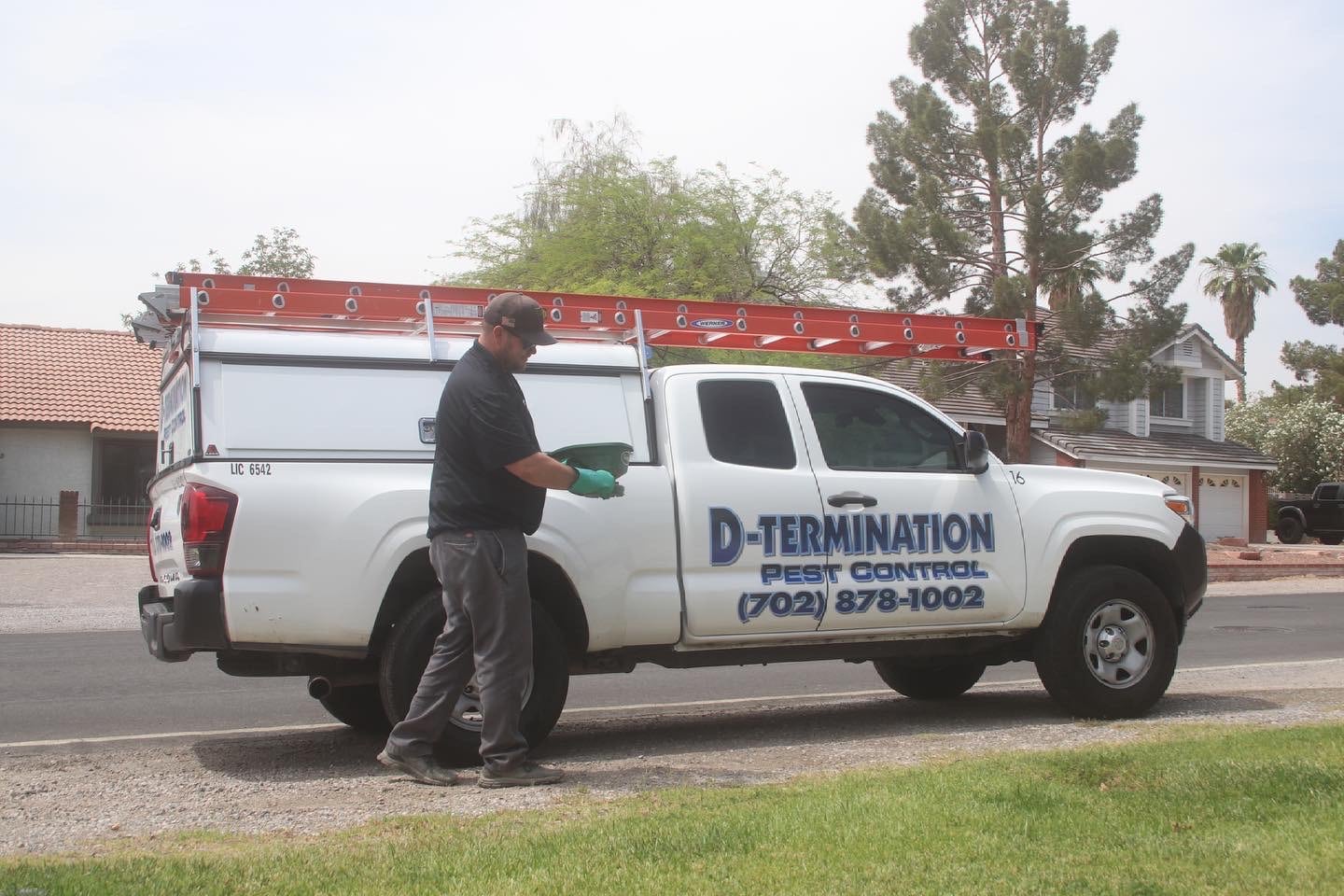
If you’re grappling with ant problems, D-Termination is here to provide assistance. Our skilled team excels at discouraging ants, rejuvenating cleanliness, and preserving the integrity of your surroundings. Bid farewell to ants—opt for D-Termination for highly effective pest control today!
Reach out to us at 702-919-6310 or visit dtermination.com to schedule your ant control service and regain your space from these unwanted pests.
Frequently Asked Questions:
The large red-looking ants might be red harvester ants, a common species in some regions.
Large red ants can be harmful, as they may deliver painful stings when provoked.
The big red ants around your house are likely red harvester ants.
To get rid of red ants in Nevada, use ant baits or consult a pest control professional for effective removal.

